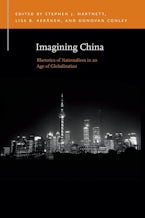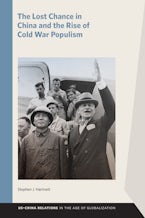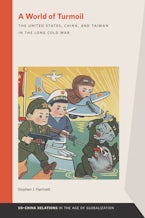Standing as the world’s two largest economies, marshaling the most imposing armies on earth, holding enormous stockpiles of nuclear weapons, consuming a majority share of the planet’s natural resources, and serving as the media generators and health care providers for billions of consumers around the globe, the United States and China are positioned to influence notions of democracy, nationalism, citizenship, human rights, environmental priorities, and public health for the foreseeable future. These broad issues are addressed as questions about communication—about how our two nations envision each other and how our interlinked imaginaries create both opportunities and obstacles for greater understanding and strengthened relations. Accordingly, this book provides in-depth communication-based analyses of how U.S. and Chinese officials, scholars, and activists configure each other, portray the relations between the two nations, and depict their shared and competing interests. As a first step toward building a new understanding between one another, Imagining China tackles the complicated question of how Americans, Chinese, and their respective allies imagine themselves enmeshed in nations, old rivalries, and emerging partnerships, while simultaneously meditating on the powers and limits of nationalism in our age of globalization.
ContentsIntroduction: A Gathering Storm or a New Chapter?Part One. Rhetorical Histories, Contested Nationalities, and Emerging TransculturesPreface to Part One, by Leonard C. HawesThe Little Red Book Lives On: Mao’s Rhetorical Legacies in Contemporary Chinese Imaginings, by Xing LuChen Guangcheng and the Rhetorical Politics of Dissent: Imagining Human Rights in U.S.–Sino Relations, by Michelle Murray YangAlternative Modernities, Postcolonial Colonialism, and Contested Imaginings in and of Tibet, by Stephen J. HartnettImagining China in Twelve Vignettes, photographs by Jeremy Make, captions by Stephen J. HartnettPart Two. Imagining Communities in the Age of RiskPreface to Part Two, by Mohan J. DuttaChina’s Fraught Food System: Imagining Ecological Civilization in the Face of Paradoxical Modernity, by Donovan ConleyHer Milk Is Inferior: Breastfeeding, Risk, and Imagining Maternal Identities in Chinese Cyberspace, by Zhuo BanImagining Health Risks: Fear, Fate, Death, and Family in Chinese and American HIV/AIDS Online Discussion Forums, by Huiling Ding and Jingwen ZhangImagining the People’s Risk: Projecting National Strength in China’s English-Language News about Avian Influenza, by Lisa B. Keränen, Kirsten N. Lindholm, and Jared WoollyPart Three. Representations, Imaginations, and the Politics of CulturePreface to Part Three, by Kent A. OnoImagining Dissent: Contesting the Facade of Harmony through Art and the Internet in China, by Patrick Shaou-Whea DodgeImagining China through the Culture Industries: The 798 Art Zone and New Chinas, by Elizabeth BrunnerA Beijing Wolf in Hong Kong: Lufsig and Imagining Communities of Political Resistance to Chinese Unification, by David R. GruberConclusion: Imagining China and the Rhetorical Work of InterpretationAcknowledgmentsAbout the ContributorsIndex





